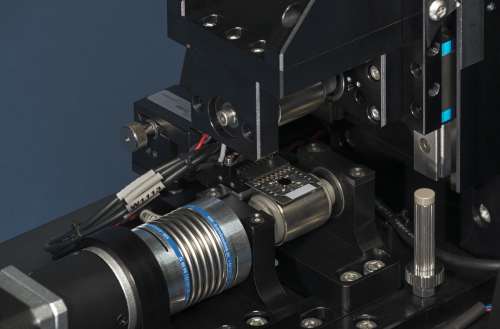AC vs. DC Magnetic Field Measurements: Understanding Techniques and Applications
11.22.2023

Hall measurement stands as a crucial technique in characterizing electronic materials and devices, offering pivotal insights into material properties, particularly in semiconductor research. The Semilab PDL Hall system stands out with its proficiency in both AC and DC Hall measurement modes, serving as a versatile tool for characterizing various materials, including silicon and compound materials. This article aims to elucidate the distinctions, advantages, and applications of AC and DC magnetic field measurements, focusing on the capabilities of the PDL Hall system. Additionally, it introduces the concept of a bi-modulated solution, an innovative approach encompassing both modulated magnetic and drive currents, further enhancing measurement precision.
AC and DC Magnetic Field Measurement Techniques
In standard terminology within SEMILAB Co. Ltd., the PDL measurement employing a sinusoidal magnetic field is often referred to as AC, whereas the DC Hall measurement utilizes an electromagnet, sweeping the magnetic field linearly from minimal to maximal values. Additionally, the bi-modulated solution involves modulating not only the magnetic field but also the driving current/voltage periodically. It's crucial to note that during both AC and DC measurements, the DC voltage applied forms an integral part of the measurement process.
DC Hall Measurement Approach
The Semilab PDL Hall technique involves measuring the electrical potential between two sample points while current flows through the material between two other points. DC Hall measurements prove advantageous for materials with higher mobility, where signal-to-noise ratio (S/N) is less critical. Notably, applying a DC magnetic field significantly quickens the measurement process compared to an AC magnetic field. However, challenges arise when dealing with materials of very low or very high resistance, impacting the accuracy of voltage measurements, especially in high-resistance scenarios.
The PDL Hall system software provides an additional option: the utilization of a DC magnetic field. This method involves rotating the magnet to generate a consistent DC magnetic field. The measurement process entails two phases: first, positioning the magnet to create the maximal field and conducting a measurement; subsequently, rotating the magnet to the minimal field and conducting another measurement. These sequential steps result in a DC measurement, enabling a different approach to gather data and characterize materials.
AC Hall Measurement Advantages
AC Hall measurements offer superiority in handling materials with high resistance or very thin films. The PDL Hall system features an innovative magnetic trap system with a "camelback field confinement" effect, facilitating precise measurements of sheet resistance, carrier concentration, and mobility across a wide range of values. These measurements are particularly advantageous for materials with mobility below 0.1 cm^2/Vs, ensuring high sensitivity, making it ideal for research and development applications.
Bi-Modulated Solution: Enhancing Signal-to-Noise Ratio
The bi-modulated method developed by Semilab involves applying both AC electric and magnetic fields, further enhancing the signal-to-noise ratio. This solution becomes pivotal in accurately measuring the electrical conductivity and Hall effect, particularly in samples possessing high carrier density, such as thermoelectric materials. Its capability to distinguish Hall voltage from background noise in low S/N ratio scenarios makes it a powerful tool in material characterization.
Comparative Analysis: AC vs. DC Magnetic Field Measurements
The distinctions between AC and DC magnetic field measurements lie in their applicability based on material properties and specific application requirements. AC Hall measurements demonstrate superiority in characterizing materials with low mobility and high resistance, enabling precise data extraction even in environments susceptible to potential interference., DC measurements present a quick measurement method for materials with higher mobility, where the signal-to-noise ratio (S/N) is of lesser concern.
The PDL Hall System: A Versatile Tool for Material Characterization
Capable of performing AC, DC, and bi-modulated Hall measurements, the PDL Hall system offers a versatile solution for characterizing a broad spectrum of materials. Its innovative magnetic trap system enables sensitive and precise measurement of various material properties, making it invaluable for researchers and professionals in the field of electronic material characterization.





